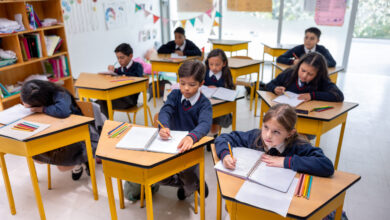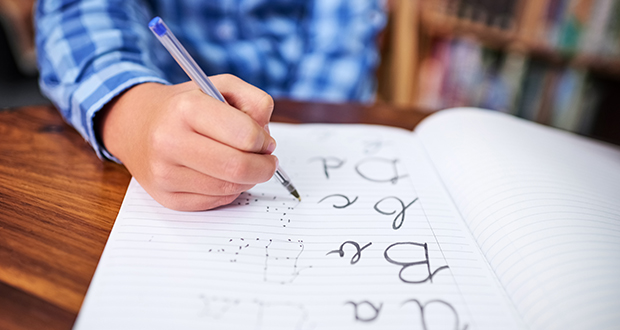Wellbeing for Learning: Moving to Maslow and Bloom

The impact of COVID-19 on students
In 2020, COVID-19 caught students, teachers, schools and education systems off guard with the global pandemic, disrupting the education of 1.5 billion students across 188 countries.
The effect of the pandemic on the wellbeing and learning of students has been unprecedented. In a 2021 report, the OECD revealed that mental health issues faced by young people have doubled across their 38 member nations as a result of COVID-191. In Australia, the Australian Childhood foundation reported that 29% of parents consider the pandemic to have negatively impacted their child’s education, with 37% of parents stating that their children are more anxious and stressed than before the pandemic2. Pivot Professional Learning’s research into educator perspectives on the impact of COVID-19 across Australia and New Zealand revealed that teachers and school leaders are more concerned about student wellbeing than with learning loss as a result of the pandemic3.
COVID-19 and the call for ‘Maslow and Bloom’
As a consequence of the uncertainty and stress of COVID-19 on students, at the height of the pandemic educators were calling for an approach that prioritised Maslow’s Hierarchy of Needs (the fundamentals of wellbeing) before Bloom’s Taxonomy (the cognitive challenges that drive rigorous academic learning). While ‘Maslow before Bloom’ has been a familiar saying in staff rooms and classrooms for some time, school closures and remote learning caused educators to urgently highlight the importance of meeting the basic needs of students before expecting them to meaningfully engage in their learning.
With the approach of Maslow before Bloom, wellbeing and learning are seen as distinct and separate entities. This approach suggests that teachers are the ones to take responsibility for student wellbeing and it suggests that students cannot learn anything until all of their needs are first met.
Moving from Maslow and Bloom to Maslow before Bloom
While there are a certainly benefits to students in prioritising wellbeing before learning, as we enter a ‘new normal’ and look to education in a vaccinated world, it is time for schools to pursue an approach that blends both wellbeing and academic learning as inseparable goals and move to a perspective of Maslow and Bloom.
 Pivot’s Wellbeing for Learning framework
Pivot’s Wellbeing for Learning framework
In establishing an approach where Maslow and Bloom sit side-by-side, Pivot Professional Learning has established a framework of Wellbeing for Learning. Under this framework, there is a mutuality between wellbeing and academic achievement where positive and engaging learning environments can foster the development of social-emotional competencies and vice versa. When we support students with both their wellbeing and their learning in the same sphere, we better support students to be ready to learn.
With this approach, wellbeing is owned by the students themselves as much as being the responsibility of teachers, as students become more engaged and active participants in their learning environment. When students directly experience this interconnectedness of wellbeing and learning, research shows that they are less likely to experience mental illness, participate in risky behaviour or be absent from school.
While the approach of Maslow before Bloom was important in supporting students through the global pandemic, to best support students in this ‘new normal’ educators should take an approach that establishes wellbeing and learning as fundamentally connected. When learning can occur in this way, we do not just set students up for success in the classroom, but we also set them up for success once they leave the school gates and face the challenges of adult life. It is with Maslow and Bloom together that educators can support students to experience both positive wellbeing and learning outcomes.
Support student wellbeing in your school with Pivot
Pivot Professional Learning are launching their new Wellbeing for Learning Tool this August. Designed to help schools measure, track and support student wellbeing using a strengths-based approach, the Wellbeing for Learning Tool is a simple and easy way to monitor wellbeing from an individual student to whole-school level.
Check-in with students in just 1 minute a week and receive:
- Real-time tracking of how students are feeling
- Clear data visualisations of wellbeing trends
- Evidence-based insights across your student cohort
- Targeted resources that support meaningful interventions
For more information go to pivotpl.com/wellbeing-for-learning or email [email protected].
- OECD (2021) Supporting Young People’s Mental Health through the COVID-19 Crisis, OECD Publishing, Paris
- Tucci, J., Mitchell, J. and Thomas, L. (2020). A Lasting Legacy – The Impact of COVID-19 on children and parents. Australian Childhood Foundation, Melbourne.
- Flack, C. B., Walker, L., Bickerstaff, A., Earle, H., & Johnson, C. L. (2021). Principal perspectives on the impact of COVID-19: Pathways toward equity in Australian schools. Pivot Professional Learning.
Email [email protected]







